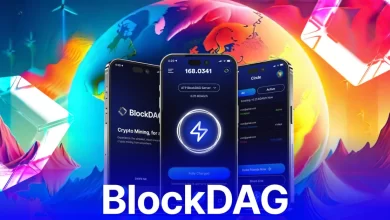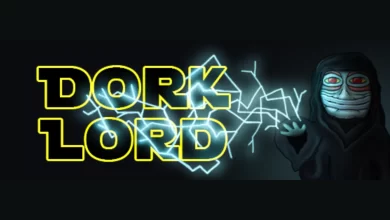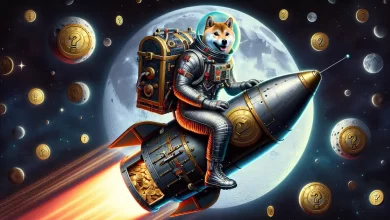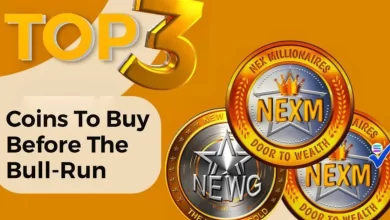The Effects Of Bitcoin’s Halving On The Markets
Bitcoin is the first of the cryptocurrencies, and its creation has changed the world.
Its creator included several deflationary mechanisms. One of them is the Bitcoin halving event.
During the halving process, benefits (bitcoins) given to the Bitcoin miners as a reward for transaction confirmation are reduced by 50%.
For every block added to the Bitcoin blockchain, rewards get distributed to miners. The halving event occurs once every 210,000 blocks on the Bitcoin blockchain.
Bitcoin will have only 21,000,000 tokens. This fixed supply is another deflationary measure put in place by Satoshi Nakamoto, Bitcoin’s creator.
These measures and more influence the current bull run we see in the markets. Then again, other factors are contributing to Bitcoin’s price rise.
A History of Bitcoin Halving
The halving benefits paid to miners in 2009 were 50 bitcoins. The first halving took place on November 28, 2012. At this time, the reward split from 50 bitcoins per block to 25.
The next one took place on July 9, 2016, with the tokens halved to 12.5 bitcoins per block, while the last one took place on May 11, 2020, with the mining reward set at 6.25 bitcoins per block.
The next halving event is going to take place between February and June 2024.
The last Bitcoin halving event will take place in 2140. From then on, miners shall receive fees for transaction confirmation.
The rewards given to miners have dropped, but Bitcoin prices are rising exponentially.
With Bitcoin crossing the $50,000 mark, we shall see higher prices as the cryptocurrency tokens demand increases.
How Bitcoin Halving Events Create Scarcity
It is an economic principle that reducing the supply of a commodity drives the demand up and vice versa.
Here, a reduction in bitcoins given as a reward to miners has also driven up demand. A rise in demand for any commodity is also directly proportional to rising prices.
A correlation between the Bitcoin prices and successive Bitcoin halving events has indicated a sharp surge in prices and a rally.
These price patterns prove that the scarcity created by the halving events causes an increase in demand and thus an increase in Bitcoin prices.
Human Interest Drive Bitcoin Prices
Cryptocurrencies have become a part of popular culture. Interest and the use of Bitcoin and the altcoins have been rising exponentially. As more people adopt Bitcoin, the higher its prices rise.
The use-cases of Bitcoin are limited. It is a first-generation cryptocurrency.
Then there are also the environmental issues that Proof-of-Work (PoW) brings to the table as a consensus mechanism.
Second-generation cryptocurrencies have tried to solve this. Proof-of-Stake (PoS) and the use of the Ethereum Virtual Machine (EVM) are examples of solutions that have improved on Satoshi’s model.
None have come close to solving the various issues like Qtum.
Qtum Has Changed the Cryptocurrency Space
The Qtum cryptocurrency project comes with many innovations. And then some.
Based on Bitcoin’s unspent transaction outputs (UTXO) model, the project’s blockchain brings the network stability of Bitcoin’s blockchain to its ecosystem.
The difference here is that the project uses Proof-of-Stake (PoS) as a consensus mechanism and has smart contract functionality. These are some features that have made the project popular.
Qtum also deploys the halving mechanism. Naturally, this has created some scarcity of Qtum’s tokens. QTUM prices hover at around $14. and a market capitalization of a little over $1.3 billion.
The QTUM token currently ranks as the 85th most capitalized cryptocurrency token, showing demand.
About Qtum’s Halving Event
While Qtum’s and Bitcoin’s halving events occur similarly because of the distinct features of each ecosystem, they function differently. Qtum uses Proof-of-Stake (PoS).
Stakers within the system get rewards of Qtum tokens with the formation of new blocks. It includes gas and transaction fees for each block.
At the start of the project, 4 QTUM were given as rewards to stakers every four years (3,942,000 blocks). The December 2021 halving event will bring the rewards given per block to stakers to 0.5 QTUM.
The Fastlane hard fork has hastened the block formation time from 128 seconds to 32 seconds. Block rewards shall end in 2045.
How Qtum’s Halving Will Play Out in the Decentralized Finance (DeFi) Space
As QTUM’s prices rise due to the scarcity of tokens and an increase in defi apps within its ecosystem, prices will shoot up exponentially.
The reason for this is that several factors are contributing to its price rise. In Bitcoin’s case, the transfer of value is its only use case.
Qtum’s decentralized application capabilities would most likely be the spark that will cause token prices to explode.
We are seeing developers migrate from Ethereum to other EVM compatible and smart contract-enabled blockchains and ledgers.
Qtum offers developers a great head start in defi and other smart contract-dependent applications.
The utility gained from the influx of developers and users will give the Qtum blockchain its momentum. We shall see Qtum take its place among the cryptocurrencies that will change the world.
Bitcoin’s Dominance Will Reduce
Second-generation blockchains will have different forms of innovation and utility are emerging. Bitcoin will remain a fan favorite for all time. The reason for this is its first-mover advantage and the diehards who love it.
However, other blockchains with similar deflationary properties with Bitcoin will continue to push their way to the top. They will lead the pack. It has nothing to do with the properties they have.
The utility and innovation that they bring to the table shall play roles in their domination.
People will still want to have and hold Bitcoin because of its status as a world-first. We also have the Bitcoin community, which created what we know today as the cryptocurrency space.
Rather than use Bitcoin as a security, people will own it as a commodity. It will reflect on how its exponential price rises continue.
But as for it still being the King of the Hill, it may be rather unlikely. Another cryptocurrency with deflationary properties will take its place. But not immediately.
And this is what the cryptocurrency space is all about. Innovation in its purest forms!
Disclaimer and Risk Warning
This is a guest post. Coinpedia does not endorse or is responsible for any content, accuracy, quality, advertising, products, or other materials on this page. The image used in this article is for informational purposes only and is provided to us by a third party. Coinpedia should not be held responsible for image copyright issues. Contact us if you have any issues or concerns. Readers should do their research before taking any actions related to the company.













